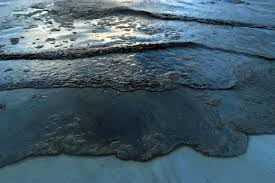Or Oil as we more commonly know it, has been much in the news over the last few months with the price for crude dropping by more than 50% as the oil boom in the USA continues with the more recent adoption of hydraulic fracturing (fracking to you and me.) This method has allowed energy companies to extract oil from shale that previously was inaccessible. Add to this the 30 million barrels produced by OPEC, who have decided so far, not to reduce production levels, and it’s little wonder that the price as of January was just $45 a barrel compared to $115 in June 2014. The resulting drop in fuel prices at the pump, which impacts on all of us, has been great news. (OPEC was formed in 1960, the Organisation of the Petroleum Exporting Countries, made up of; Iran, Iraq, Kuwait, Saudi Arabia, and Venezuela, Algeria, Angola, Ecuador, Libya, Nigeria, Qatar and United Arab Emirates.)
British Oil Fields
The UK has been drilling in the North Sea since 1965 as it has its own sources of oil and has been the largest producer of oil in the EU for some time although production may continue to decline due to a combination of taxes (Corporation Tax and Supplementary Tax income from the sector accounts for about 25% of UK corporate tax receipts), technical issues, mature basins and high operating costs as well as challenging targets for increasing renewable energy. The high extraction costs don’t make the UK oil fields a particularly attractive prospect for investors but the government hopes to address some of these issues to keep ‘home grown’ oil a viable proposition for many years to come. Oil still plays an important part for the moment in the balance of our energy between natural gas, coal and electricity and we are still a major player in the production of petroleum, much of which is exported to Europe and in particular to Germany and the Netherlands. The UK does still import fossil fuels (39% of our oil consumption in 2013 was imported) suggesting that we are some way off being self-sufficient in our energy supplies renewable energy targets or not.
Old Technology
Oil was formed millions of years ago from the decay of plant and algae compressed on the sea beds under thick layers of sediment which heated up as the sediment layers got deeper and deeper. Some types of oil came to the surface in oil ‘seeps’ and was used by ancient peoples who recognised its value. The Egyptians, using the liquid form for medicinal and embalming purposes and Native Americans using tar as an adhesive to bind stone tools to wooden handles. Historically the first ‘drilling’ for oil was done by the Chinese using bamboo poles up to a depth of 800m in 347AD. Marco Polo noted its presence in Azerbaijan in the late 13th century and over the next few hundred years more oil and more uses for it were discovered including as a treatment for gout for the Holy Roman Emperor Charles V in the mid-1500s. The first record of oil in the US was in Pennsylvania almost 200 years later with the first oil well drilled in Pennsylvania on shore in 1859. In 1896 the first off shore well was drilled in California.
On the down side
Oil production over the years has gone from strength to strength with a vast number of products outside of energy use being developed including Nylon, plastic and many other synthetic products. However there have been times of environmental catastrophes with oil tanker disasters and 200,000 gallons of crude oil released into the Pacific Ocean due to an off shore platform causing cracks in the sea floor creating a huge ecological disaster in the 1960s. The invasion of Kuwait by Iraqi forces saw the sabotage of around 700 oil wells with estimates of spillage being anywhere between 46 and 138 million tons in 1990 taking almost a year after liberation by Western Forces before the last well was capped.
The Future
There are, no doubt, still areas of exploration to find new fields but progress in renewables and new technologies has seen research into the transformation of sugars or even bacteria into energy rich biofuels. Work in the field of synthetic biology shows that microbes can produce a variety of molecules from these that can then serve as blendstocks for diesel or petrol. The aim is to be able to produce fuels and other valuable chemical products from simple, inexpensive and renewable starting materials in a sustainable manner. Good news to be sure but we think oil will be around for a long time yet.
